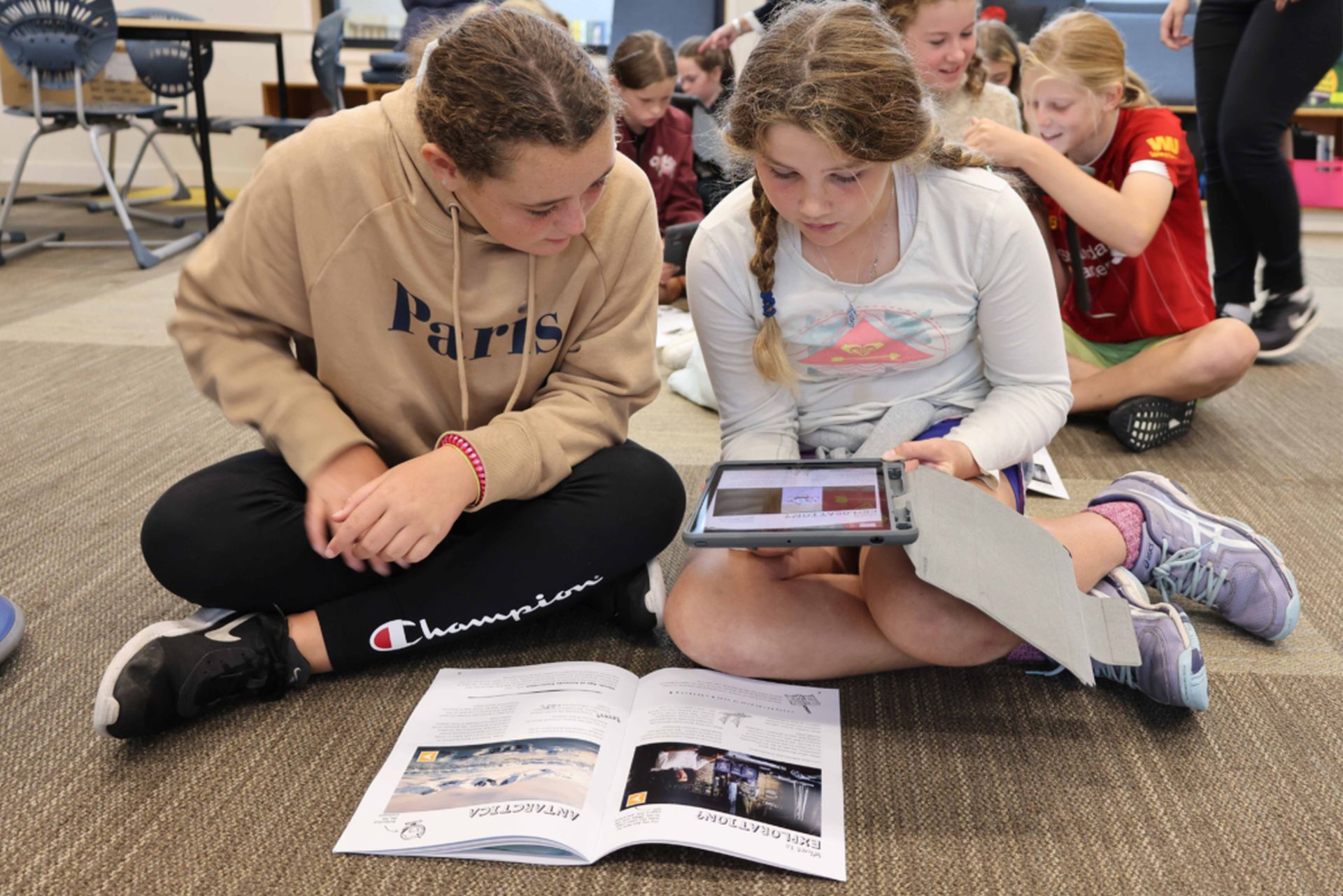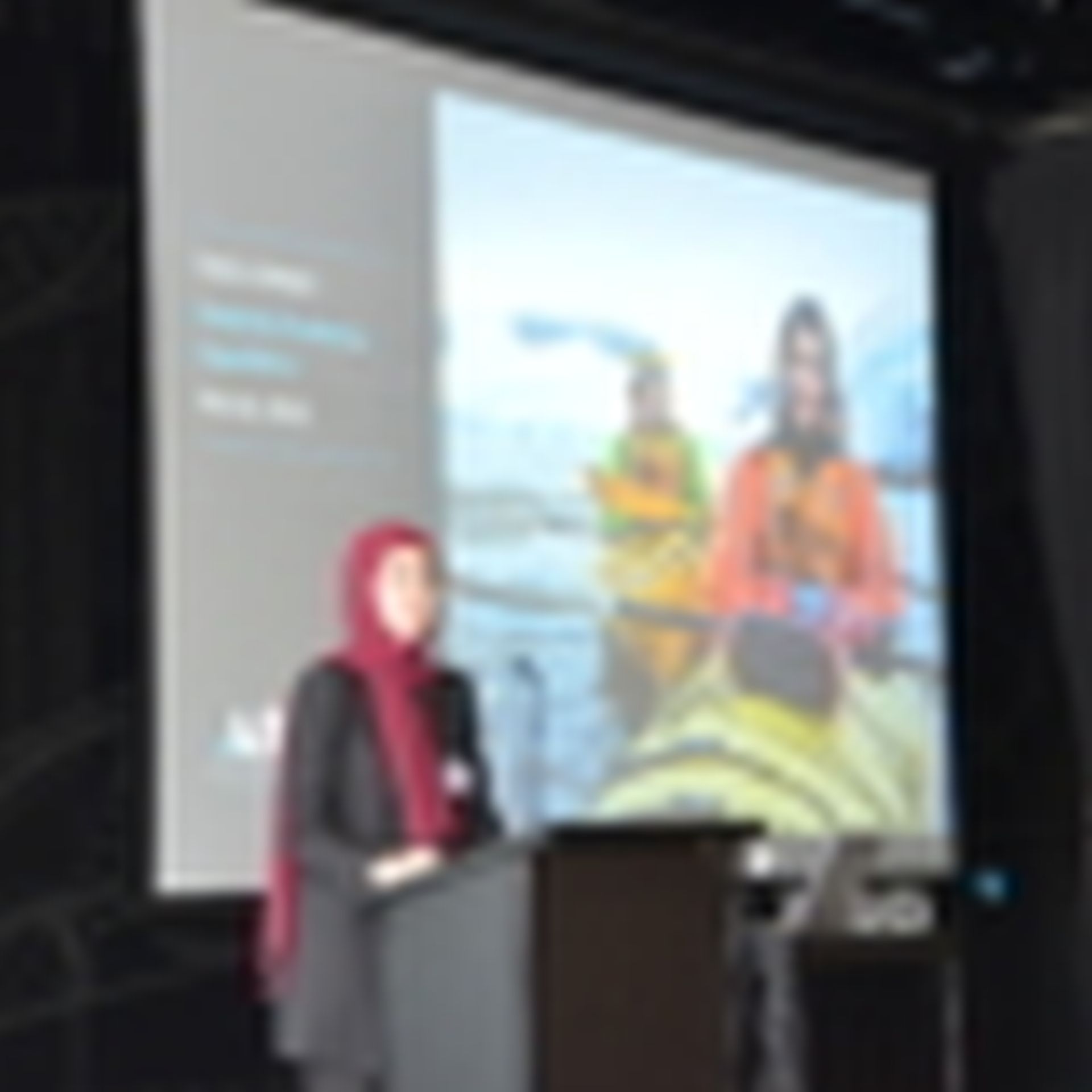Augmented Reality Brings Antarctica to Life
We are excited to present Antarctic Heritage Trust’s leading edge, free augmented reality (AR) app. Launched in late March at one of the Trust’s alumni schools in New Zealand, the AR app provides two unique Antarctic experiences: Antarctic 3D Artefacts and My Explorer Journal.
My Explorer Journal is one of the most immersive and creative outreach projects delivered by the Trust’s Inspiring Explorers so far. School-aged explorers can use the app in conjunction with a downloadable activity booklet to learn about the history of Antarctic exploration, Antarctic Heritage Trust’s Inspiring Explorers Expeditions™, and unique Antarctic wildlife. Augmented reality and 360° videos and photo galleries come to life by using the app to scan codes throughout the booklet.
This is the creative vision of the Trust’s Inspiring Explorers Expedition™ participant Anzac Gallate, who travelled to the Antarctic Peninsula on our expedition in March 2020 with partner Quark Expeditions. A marine biology student at the University of Otago, Anzac blends his scientific mind with his creative mind for this project.
“Using the app, pictures on the page come to life, like in Harry Potter. I can’t wait to see students using it to explore this incredible place. They can stand in penguin colonies, come face to face with seals, and paddle past whales. They can go from viewing 360 videos to doing crafts activities and journaling, all in the same experience. The journal brings the concept of exploration to life – it identifies what exploration is and shares stories of historic explorers, before focusing on modern expeditions and science down on the Ice.” says Anzac. His artistic talent is also showcased with all illustrations throughout the journal drawn by Anzac.
Users can also explore the Antarctic 3D Artefacts experience on the app to gain insight into the first expedition to winter over on the Antarctic continent. Objects left behind at Cape Adare by Carsten Borchgrevink’s 1898-1900 British Antarctic Expedition and Scott’s Northern Party Expedition can be brought digitally into your own environment. These artefacts have been conserved by Antarctic Heritage Trust’s international team of experts.
App users can project a century-old fruitcake or an explorer’s well-travelled boot onto a surface right in front of them, and examine the artefacts from all angles, while listening to fascinating commentary about each object, and learning more through videos, photo galleries and web links.
This curated collection of everyday items also includes an enamel mug, a toothbrush, a tin of marmalade, a tin of tobacco, and a box of glass photographic plates.
Objects from the huts were brought out of Antarctica under Government permit in 2016 for treatment by an international team of conservators. While in New Zealand for conservation, a selection of items were scanned using photogrammetry by Tim Handfield of Handfield & Bell Digitising Consultants. This uses highresolution digital photographs taken from multiple perspectives.
Francesca Eathorne, Trust General Manager Operations and Communications says, “This technology will make Antarctica more accessible to people around the world, and encourage the spirit of exploration, even if it does have to be in our own backyard due to the global pandemic. These artefacts connect us to the first explorers in Antarctica and the app enables us to keep these stories alive as a source of inspiration.”
App Partners
The Trust would like to thank our partners for their time and generosity in helping create this exciting digital resource.
New Zealand-based company Staples VR worked with Anzac to bring the explorer journal to life using augmented reality through the Trust’s dedicated AR app.
Aliesha Staples, CEO of Staples VR says, “Being able to bring Antarctica to the world using emerging technology such as augmented reality in a photorealistic way makes this project not only technically challenging but incredibly important to do right. Working with Anzac to develop his ideas into an education tool that transforms into an immersive document using the AR application has been a mammoth task but when you see the final product come to life it was worth the many hours to develop.”
To capture the Antarctic 3D artefacts the Trust partnered with Australian-based Tim Handfield (Handfield & Bell Digitising Consultants) for photography and scanning and Trevor Coates (Leapfrog Strategic Communications) for 3D rendering and model refinement. Photographer Tim Handfield says, “It was a privilege to be entrusted with the 3D scanning of these amazing heritage artefacts and to see the resulting virtual objects in the AHT augmented reality app.”
Download these Antarctic experiences for free with the Antarctic Heritage Trust AR app.
How to access the app
The app is available to download for free from Google Play or the App Store.
The application is only available on surface tracking Augmented Reality compatible devices,
visit our store pages on your device to see if your device is compatible



